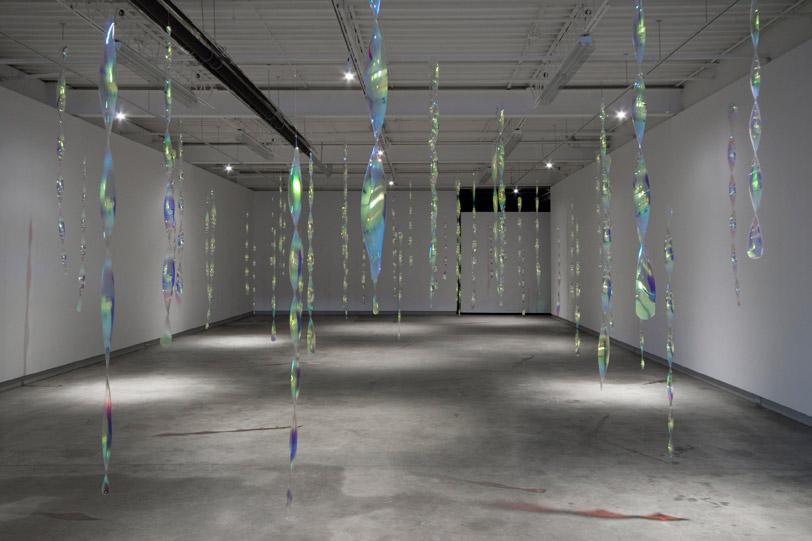Polish artist Miroslaw Balka is known for his disorienting sculpture and installation works, which, without heavy-handed overstimulation, call for the viewer to confront perception and memory. Balka’s 68x(200x8x8)Heaven, currently on view at Toronto’s Scrap Metal, feels like an unusually austere Arte Povera work, fostering self-reflection in the patient viewer rather than speaking directly to issues from the outside world.
Heaven itself is deceptively simple. Sixty-eight Perspex rods hang on transparent wire at various heights from the gallery ceiling. The rods are all the same size and all fabricated in the same spiral shape. However, this apparent simplicity gives way to a relatively unearthly sensory confusion. The rods have a subtle, ghostly animation; they sway and rotate as they pick up drafts and other barely detectable air currents—even reacting to the movement of the viewer in the space. Many of the rods revolve—clockwise, counter-clockwise, slow and fast—creating optical befuddlement and perceptual doubt. Standing in the space, it feels as if you are alternately rising and sinking, a spatial disorientation made all the more effective by the simplicity with which it is executed.
The uncertainty is furthered as the slowly rotating rods alternately catch the tungsten gallery lights and daylight from the windows, appearing to shift colour in a manner reminiscent of the way oil can make “rainbows” on the surface of water. As the rods refract light and reflect the viewer, they create a mise en abyme as the viewer’s fragmentary image is reflected, elongating and contracting on the rod’s spinning surfaces. Standing in the middle of this installation feels as decentralizing as any hall of mirrors.
The abstraction of self at the heart of Balka’s Heaven cultivates a suspension of identity. Balka asks viewers to yield to destabilizing forces and question perception. This temporary embrace of uncertainty seems to draw the gaze inward, providing a meditative and somewhat spiritual reflection on the self. The seductive sense of form, along with the fundamental beauty and grace in the installation, fosters transcendence beyond the immediate and the physical.
Heaven was installed in the courtyard of the Musée d’art et d’histoire du Judaïsme during Paris’s Nuit Blanche in 2011. It is hard to imagine how the piece would garner more than optical excitement in the context of an overwhelming and crowded art event. To reach Heaven’s meditative core, you should really visit alone.









